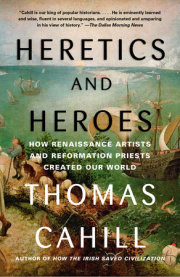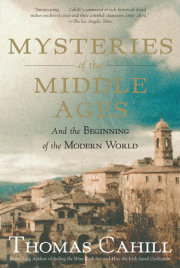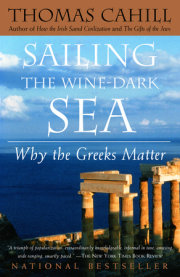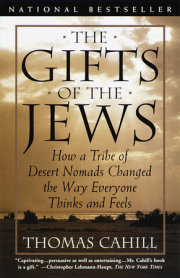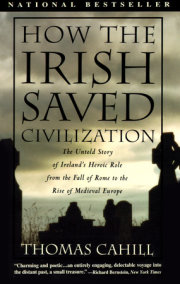Of the many enigmas of John's Gospel nothing is more mysterious than the story that does not belong there. It interrupts the flow of John's tightly stitched scheme of narration, and though, like many Johannine episodes, it gives a starring role to a woman, its supple Greek has all the characteristics of Luke's pen:
At daybreak, Jesus appeared again in the Temple precincts; and when all the people came to him, he sat down and began to teach them. Then did the scribes and Pharisees drag a woman forward who had been discovered in adultery and forced her to stand there in the midst of everyone.
"Teacher," said they to him, "this woman has been caught in the very act of adultery. Now, in the Torah Moses ordered us to stone such women. But you--what have you to say about it?" (They posed this question to trap him, so that they might have something to use against him.)
But Jesus just bent down and started doodling in the dust with his finger. When they persisted in their questioning, he straightened up and said, "He among you who is sinless--let him cast the first stone at her." And he bent down again and continued sketching in the sand.
When they heard this, they went away one by one, starting with the oldest, until the last one was gone; and he was left alone with the woman, who still stood where they had made her stand. So Jesus straightened up and said, "Woman, where are they? Has no one condemned you?"
"No one, sir," answered she.
"Nor do I condemn you," said Jesus. "You are free to go. But from now on, avoid this sin."
This entire passage sounds like the Synoptics and could easily be slipped into Luke's Gospel at 21:38, where it would make a perfect fit. It was, in fact, excised from Luke, after which it floated around the Christian churches without a proper home, until some scribe squeezed it into a manuscript of John, where he thought it might best belong. But why was it excised in the first place? Because the early Church did not forgive adultery (and other major sins) and did not wish to propagate the contradictory impression that the Lord forgave what the Church refused to forgive. The Great Church quickly became far more interested in discipline and order than Jesus had ever shown himself to be. This excision is our first recorded instance of ecclesiastical censorship--only for the best reasons, of course (which is how censors always justify themselves).The anarchic Johannine church had had good reason for its reluctance to attach itself to the Great Church, which it knew would clip its wings; and for all we know, it was a Johannine scribe who crammed the story of the aborted stoning into a copy of John's Gospel, thus saving it for posterity.
The passage itself shows up the tyrannical mindlessness that tradition, custom, and authority can exercise within a society. The text of the Torah that the scribes and Pharisees cite to Jesus is Leviticus 20:10, which reads, "The man who commits adultery with his neighbor's wife will be put to death, he and the woman." Jesus, doodler in the dust and reader of hearts, knows the hard, unjust, and self-deceiving hearts he is dealing with. He does not bother to dispute the text with them, by which he could have asked the obvious question "How can you catch a woman in the act without managing to catch her male partner?" He goes straight to the heart of the matter: the bad conscience of each individual, the ultimate reason no one has the right to judge anyone else.
How marvelous that in the midst of John's sometimes oppressive solemnities, the wry and smiling Jesus of the Synoptic gospels, the Jesus the apostles knew, the holy fool, still plays his holy game, winning his laughing victory over the stunned and stupid forces of evil. This is the same Jesus who tells us that hell is filled with those who turned their backs on the poor and needy--the very people they were meant to help--but that, no matter what the Church may have taught in the many periods of its long, eventful history, no matter what a given society may deem "sexual transgression," hell is not filled with those who, for whatever reason, awoke in the wrong bed. Nor does he condemn us.
. All rights reserved. No part of this excerpt may be reproduced or reprinted without permission in writing from the publisher.




